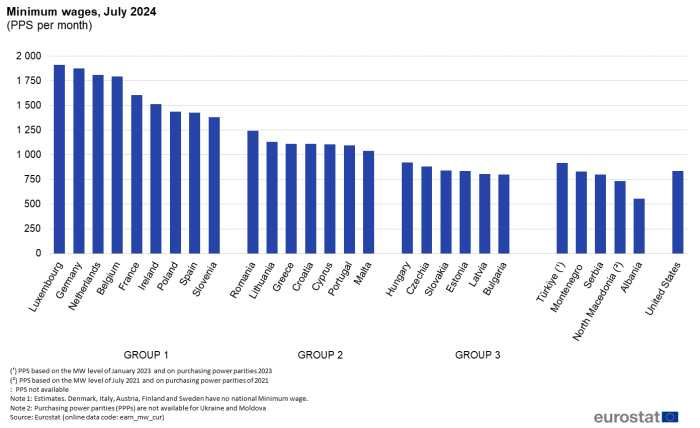This post is part of a series on whether Viktor Orbán’s economic model is successful, or not.
Still a low wage model
In this post, we argue that Orbán’s Hungary is still a low wage economy in a European comparison. Wages in Hungary are not only significantly lower than in Western Europe, but are also lower than in fellow Visegrad countries. The government is still selling Hungary as a low wage investment location to foreign investors.
Let us take a look at average wages first:
In 2023, Hungary was last before Bulgaria.
In terms of minimum wages in Euros, Hungary is also at the back end.
The above chart is from January of 2024, since when the HUF has lost value against the euro. At purchasing power parity (taking local prices into consideration), Hungary is still in the lowest group:
What about the internal distribution of wages? Where are different Hungarians compared to fellow Europeans?
When measured in euros, it is about the 73rd income percentile in Hungary that reaches the lowest ranks of the lower middle class in the European Union, defined as the 20th income percentile in the EU.
When adjusted for purchasing power parity (local price levels), the situation only improves slightly. At this measure it is the 57th Hungarian income percentile that first reaches the lowest ranks of the EU’ middle classes, defined as the 20th income percentile from below.
In both cases it can be observed that above this level the incomes of the highest top income deciles quickly converge on their fellow Europeans. It is only these top3 income deciles that can really be considered middle class by European standards.









